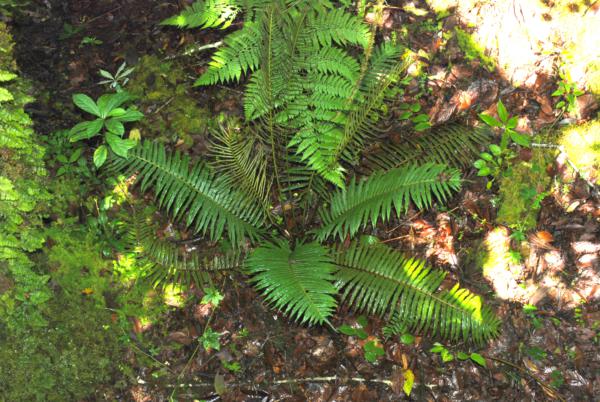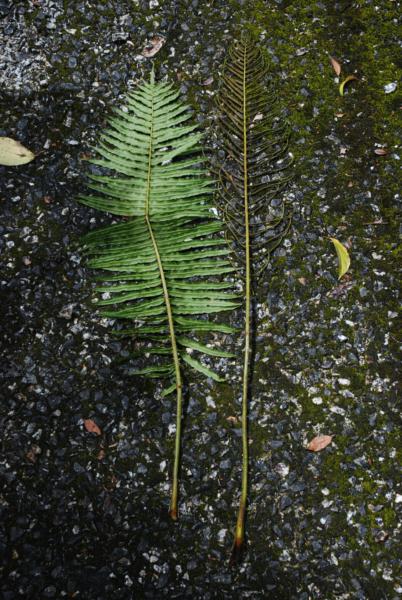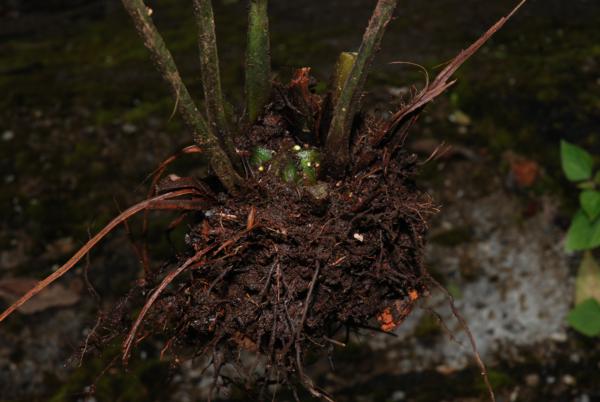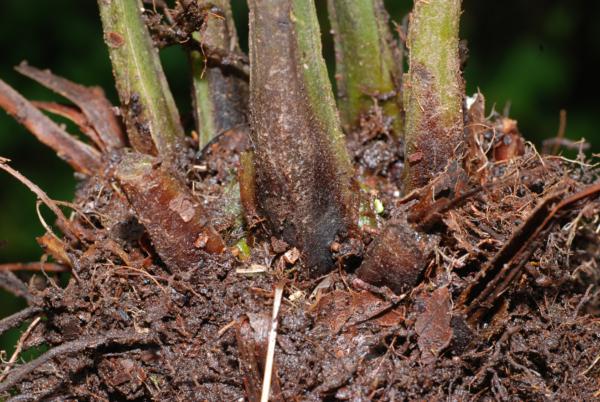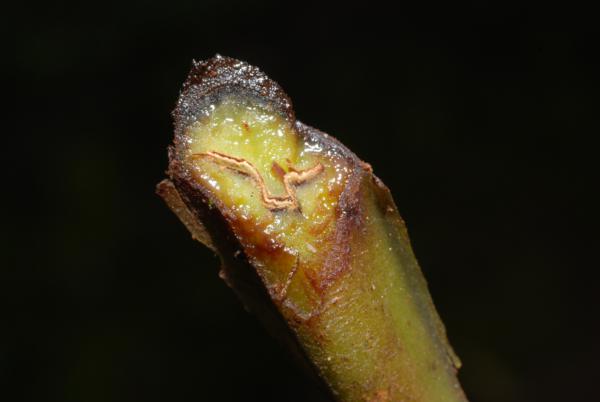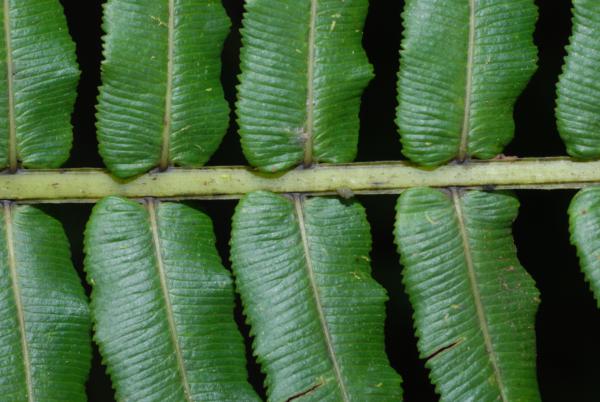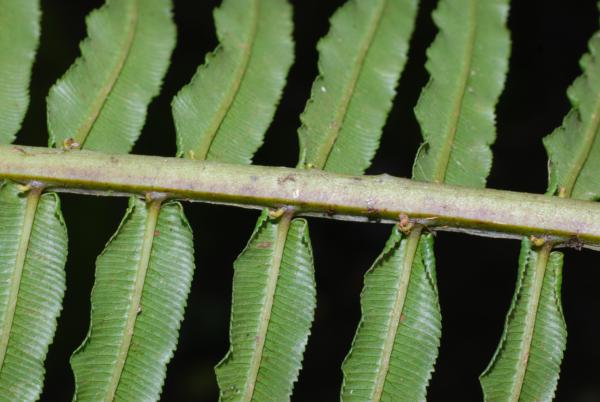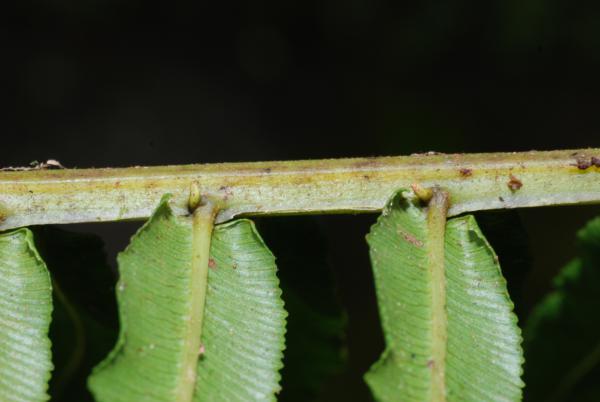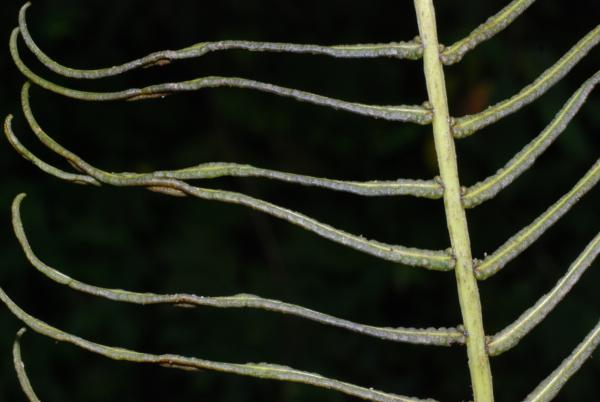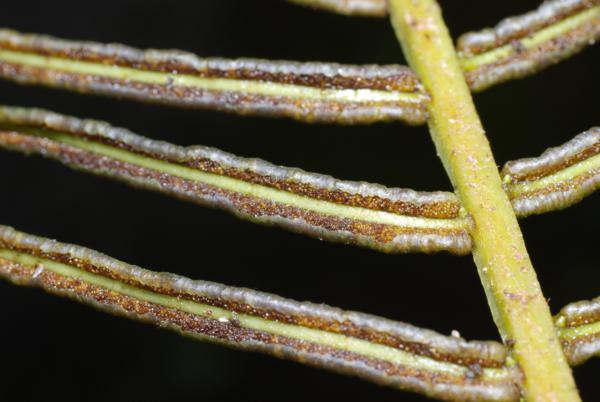
Plagiogyria pycnophylla (Kunze) Mett.
Family
Plagiogyriaceae
Nomenclature
Plagiogyria pycnophylla (Kunze) Mett., Farngatt. II: 272, t. 4, f. 22. 1858; Bedd., Handb. Ferns Brit. India: 129. 1883; Copel., Philipp. J. Sci. 38: 390. 1929; Zhang & Nooteboom, Blumea 43: 452. 1998; Zhang & Nooteboom, Fl. Males., Ser. II, Ferns and Fern Allies 3: 314. 1998. – Lomaria pycnophylla Kunze, Bot. Zeitung (Berlin) 6: 143. 1848. – Stenochlaena pycnophylla (Kunze) C.Presl, Epimel. Bot.: 165. 1851 [‘1849’]. – Type: Lectotypified by Zhang & Nooteboom in Flora Malesiana (1998): van Gesker s.n. (L sheet 908.325-138), Java, Mt. Gede.
Plagiogyria communis Ching, Acta Phytotax. Sin. 7: 122, 147, pl. 35. f. 2. 1958; Fl. Reipubl. Popularis Sin. 2: 98. 1959; Tagawa & K.Iwats., SouthE. Asian Stud. 5: 44. 1967; Tagawa & K.Iwats., Fl. Thailand 3: 48, f. 3.5. 1979; Boonkerd & Pollawatn, Pterid. Thailand: 37, 85. 2000.
See Zhang & Nooteboom, Blumea 43: 452. 1998 for many more synonyms.
Description
Rhizome short, erect or ascending, bearing a tuft of fronds, naked. Sterile fronds: stipes 23–30 cm or more long, dark brown, bearing aerophores in two rows almost to the flat and wide base; laminae oblong-lanceolate, 69–80 cm long, c.30 cm wide; pinnae 30–40 in pairs, sessile, middle ones patent, straight, lanceolate, gradually narrowing towards attenuate apex, round to broadly cuneate at base, distinctly toothed at margin, to 15 cm long, 1.5 cm broad, lower pinnae a little reduced in size, reflexed, widely spaced, falcate upper ones gradually becoming smaller; texture subcoriaceous, deep green, veins forked, all free, each veinlet ending at apex of marginal tooth. Fertile fronds: longer, pinnae 16–40 pairs, margin erose, sessile or shortly stalked, middle pinna 4.5–13(–21) x 2–4 mm; sporangia along veins, covering the whole under surface of fertile pinnae except for the midribs and thin edges, protected when young by the reflexed edges; annulus oblique, complete; spores tetrahedral .
Distribution in Thailand
NORTHERN: Chiang Mai (summit of Doi Inthanon).
Wider Distribution
N India, Upper Burma and SW China.
Ecology
At edge of marsh in deep shade near the summit of Doi Inthanon, known only in one locality at about 2500 m alt.
Proposed IUCN Conservation Assessment
Least Concern (LC). This species is widespread outside of Thailand and not under any known threat.
Notes
Fertile characters in description adapted from Zhang & Nooteboom, Fl. Males., Ser. II, Ferns and Fern Allies 3: 314. 1998.
Voucher specimens - Thailand
Middleton et al. 4918, Chiang Mai, Doi Inthanon National Park (E).Habit
Sterile and fertile pinnae
Rhizome
Base of stipes
Cross section through stipe
Upper surface of rachis and pinnae
Lower surface of rachis and pinnae
Aerophores at junction of rachis and pinnae
Upper surface of fertile pinnae
Lower surface of fertile pinnae with sori
Site hosted by the Royal Botanic Garden Edinburgh. Content managed by Stuart Lindsay, Gardens by the Bay, Singapore and David Middleton, Singapore Botanic Gardens. Last updated 24 January 2012
